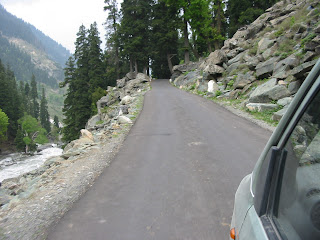Why not small buses?
Note: This was written in early 2014, in the context of KSRTC issues in Kerala's capital city Thiruvananthapuram.
One is extremely disturbed - to say the least - to read
about the woes of the Kerala State Road Transport Corporation (KSRTC), and the
woes caused to other road users by KSRTC buses. The organization is the lifeline
for ordinary citizens. Unfortunately though, it is not a thriving venture at
present; and it seems that its buses are culpable in a tragically large number
of road accidents.
In this “blessed” state of India, where villages
seamlessly transition to towns, most roads other than national highways and a
few stretches of bypasses, are too narrow to accommodate heavy vehicles. One is
often bemused and amused to watch C segment cars, luxury sedans and enormous
SUVs flow out of palatial premises to occupy unfair amounts of road space. Most
streets and alleys seem to have been designed with only processions of the
political kind in mind. After all, such processions have arguably been the
biggest users of road space over the decades.
With multi-axle buses, whose presence on the roads is
certainly much more justifiable than that of private cars, there’s nothing
amusing. It’s painful to watch them negotiate impossible turns and curves and
navigate amidst busy junctions. In such a state where land acquisition is difficult,
slow, and mostly near-impractical, it seems unreasonable to hope for, or insist
on roads broad enough to accommodate disproportionately huge, long, vestibuled
high capacity buses, though they may be the best option in terms of fuel
consumption per passenger mile.
A World Bank evaluation on ‘Factors Influencing Bus System
Efficiency with respect to Vehicle Size and Type’ carried
out by Public-Private Infrastructure Advisory Facility (ppiaf.org) has pointed
out the advantages of using buses smaller in size (and capacity). (http://www.ppiaf.org/sites/ppiaf.org/files/documents/toolkits/UrbanBusToolkit/assets/1/1d/1d8.html)
“Smaller vehicles are necessary on routes where road
conditions inhibit the use of larger vehicles. This often applies when routes
operate in high-density residential areas with very narrow streets. Other
constraints on the operation of larger vehicles may include low or weak bridges,
or terminals and depots with restricted access, as well as legislation
restricting vehicle dimensions.
Smaller buses can provide a higher frequency of service
for a given passenger flow, which can improve the convenience of the service.
Passengers also often prefer small buses because they are faster and take less
time to load.
Small vehicles also make it possible to offer a greater
number of route variations, without adversely affecting service
frequency.”
With smaller buses, there are more possibilities:
a) Car owners could be persuaded to switch to such public
transport for travel to work.
b) The buses could run on the cleaner fuel CNG, once the
infrastructure and supply lines are in place to ensure ample
supply.
In the capital city of Trivandrum, and elsewhere in the
state of Kerala, town planners along with road and transport authorities can
surely get together and look for alternatives to ease congestion, reduce
pollution and ultimately make road travel safe for all. It will surely be
possible for the JNNURM scheme to include smaller-sized buses where the terrain
and density warrant their use.


Comments
Post a Comment
i appreciate that you have some thoughts to share, and are taking the effort to do so.